Kino "living jewellery" roams across the body as a tiny personal assistant
These miniature robots can crawl over fabric to personalise garments, adapt clothing for different climates, and perform other helpful tasks.
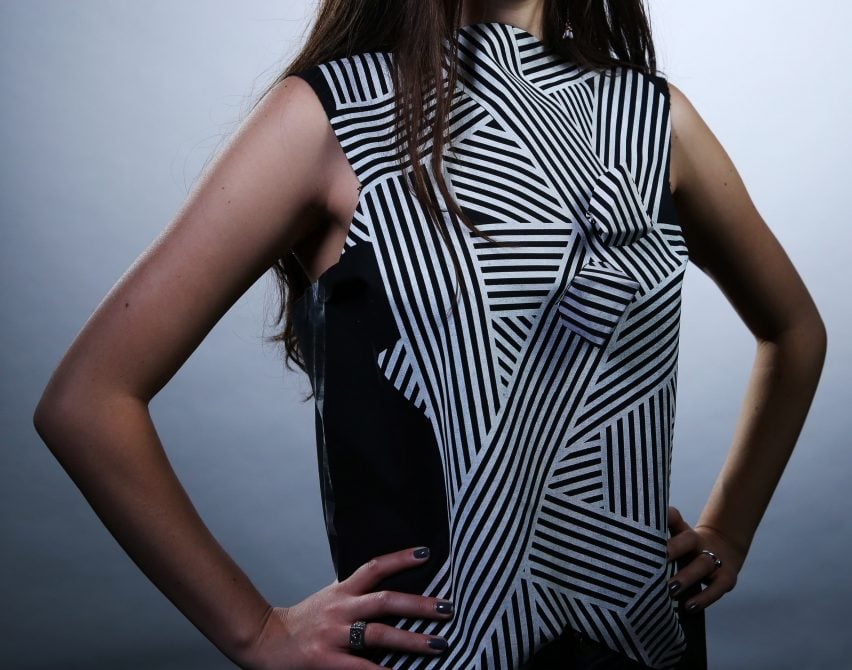
The Kino project was developed by a team of researchers, engineers and designers from MIT Media Lab, Stanford University and Royal College of Art.
Together they created a set of tiny robots that can wheel themselves over fabric to alter patterns, reposition scarves, etch marks into material, or drag off a hood once it stops raining.
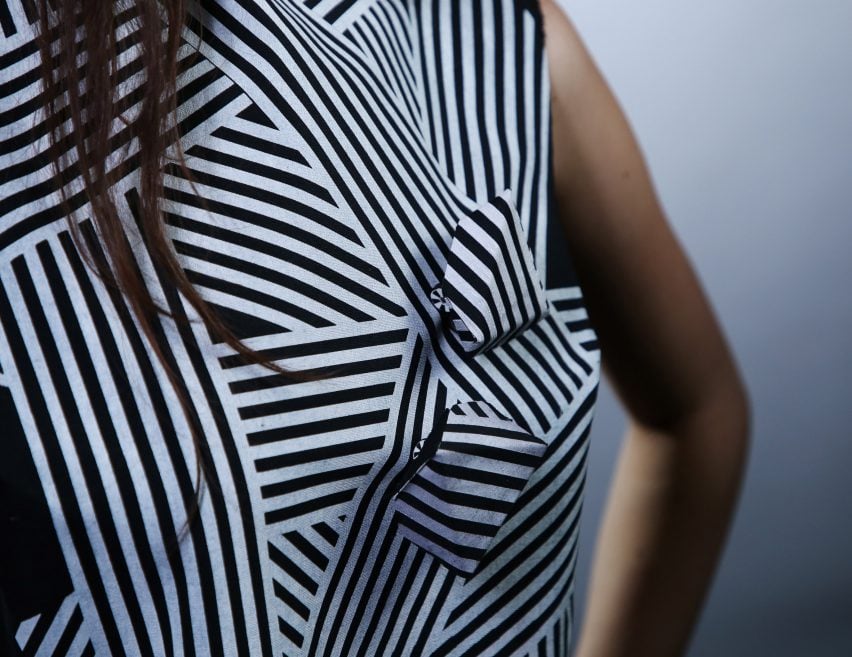
"Engineered with the functionality of miniaturised robotics, this 'living' jewellery roams on unmodified clothing, changing location and reconfiguring appearance according to social context and enabling multiple presentations of self," said the team.
The fabric is sandwiched between two rollers on top and one underneath, held together with magnets. One of the top rollers is motorised, enabling it to push the other two around and allowing the robot to move.
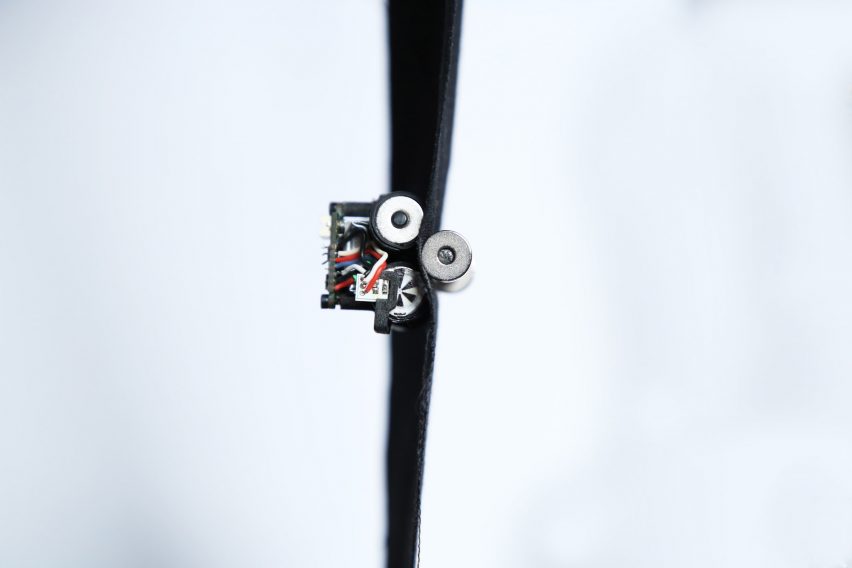
The robots can be programmed to follow predetermined routes along areas of clothing, such as up and down stripes, to create kinetic patterns.
"Attached to garments, they generate shape-changing clothing and kinetic pattern designs – creating a new, dynamic fashion," the team said.
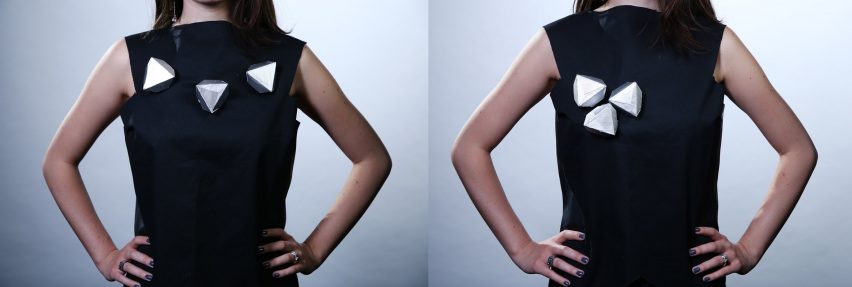
Embedded sensors can also detect changes in climate like temperature and precipitation, so the robots can transform the garments accordingly – opening vents, removing hoods or rolling up sleeves.
"With the addition of sensor devices, they can actively respond to environmental conditions," the team added. "They can also be paired with existing mobile devices to become personalised on-body assistants to help complete tasks."
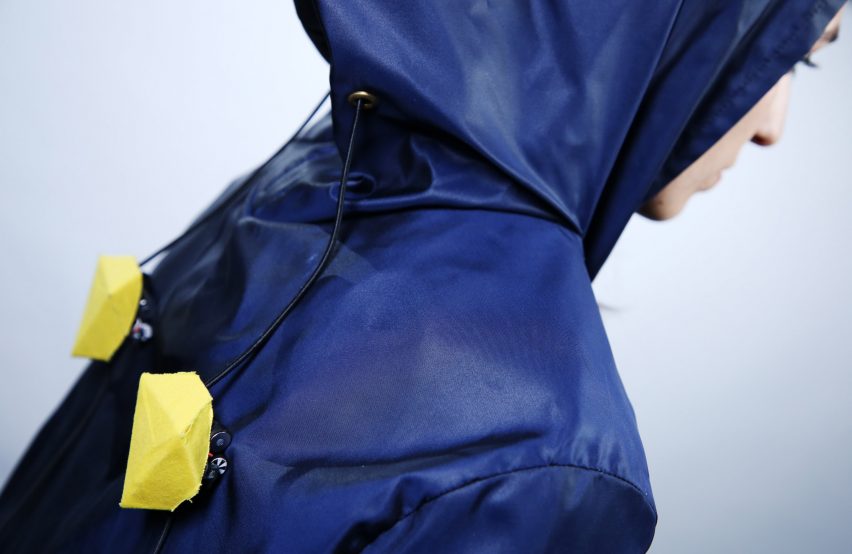
When paired with a smartphone, integrated microphones and speakers could allow the wearer to make calls or play music through the robots.
The technology is all hidden beneath an angular shell, which can be covered in fabric to camouflage the robots, or made from a contrasting material so they stand out.
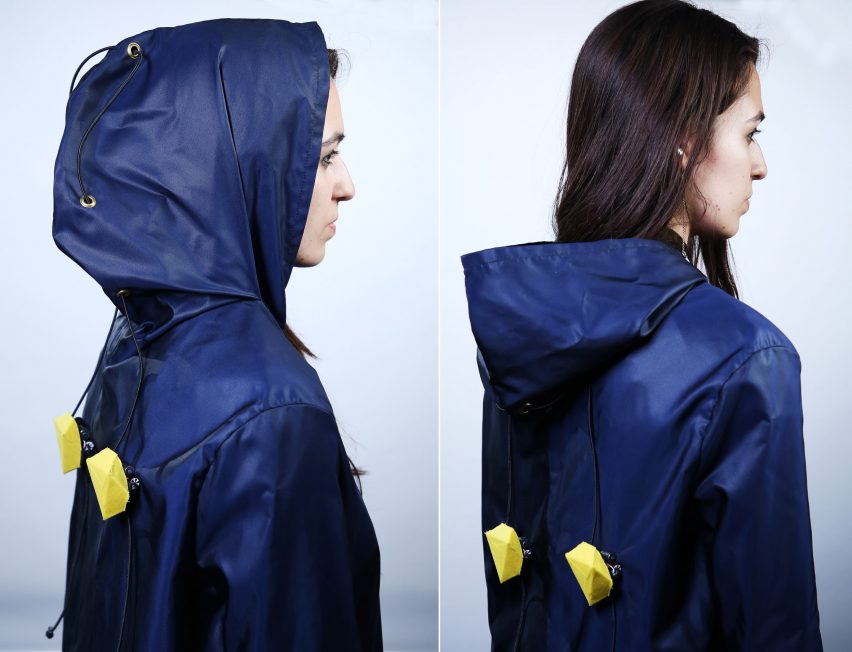
"It is our vision that in the future, these robots will be miniaturised to the extent that they can be seamlessly integrated into existing practices of body ornamentation," said the team.
Kino prototypes were displayed during the Being Material symposium, organised by MIT's Centre for Arts Science and Technology (CAST) in April 2017. Also presented during the event was a revolutionary new form of 3D printing, which can produce large objects such as chairs in a fraction of the time of regular printers.
Programmable clothing has also been explored by fashion designers like Birce Ozkan, whose feathered jacket doubles as a navigational aid and whose dress drops its panels like autumn leaves.
Subscribe to Dezeen's YouTube channel for the latest architecture and design movies
Project credits:
Cindy Hsin-Liu Kao, MIT Media Lab
Deborah Ajilo, MIT Mechanical Engineering
Oksana Anilionyte, Royal College of Art
Artem Dementyev, MIT Media Lab
Inrak Choi, Stanford Mechanical Engineering
Sean Follmer, Stanford Mechanical Engineering
Chris Schmandt, MIT Media Lab